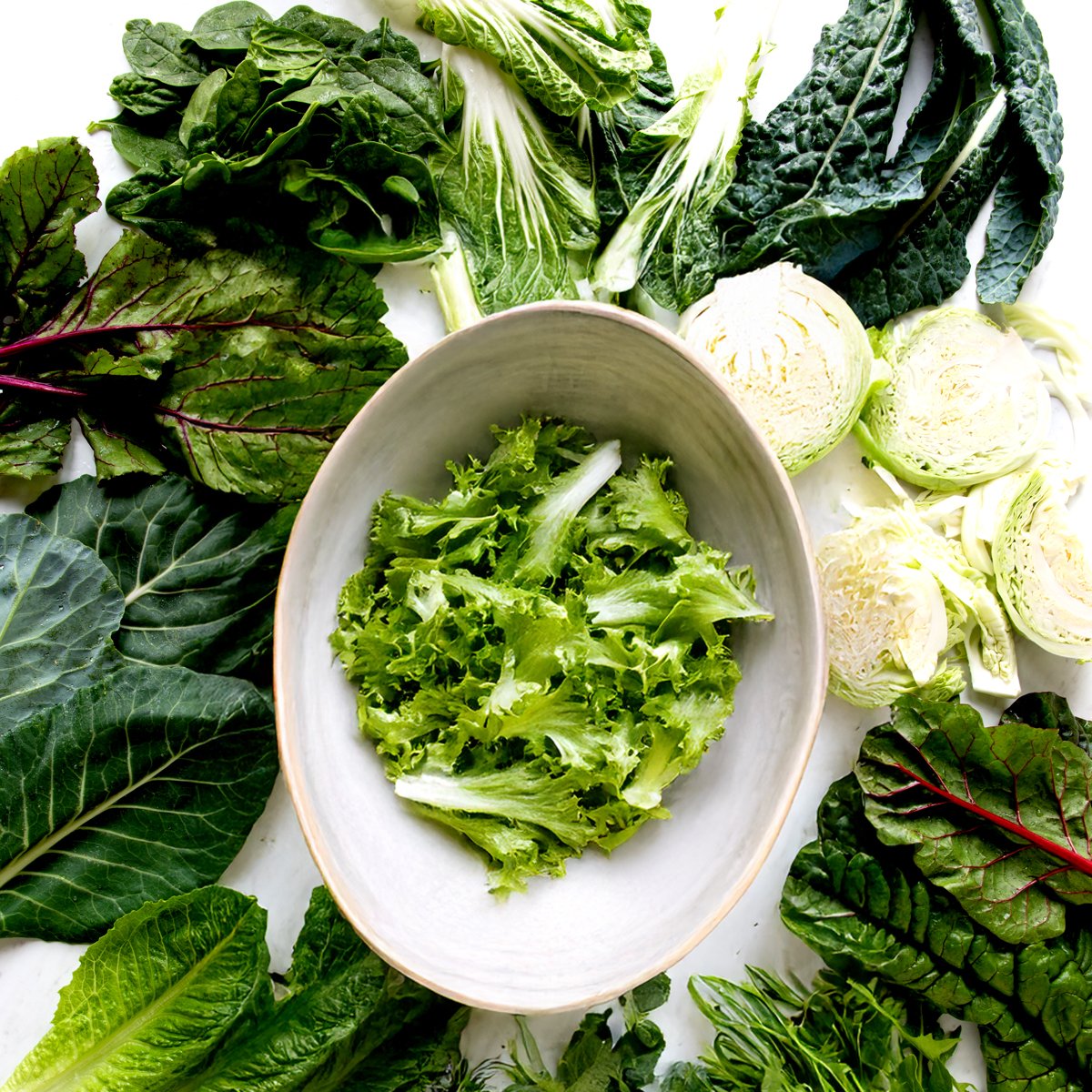
This post may contain affiliate links, meaning I can earn a small commission from items you purchase (at no cost to you).
Table of contents
Step aside salad. You’re no longer the only way to get leafy green vegetables into our diet. The following nutritional powerhouses deserve a starring role in any kitchen— not just for a trained chef. Packed with vitamins, minerals, and antioxidants, leafy greens offer a wealth of health benefits and surprising versatility in the kitchen.
I started my love affair of leafy greens with blending baby spinach into my smoothies. Over time, I started to crave more leafy green vegetables. From vibrant stir-fries to hearty plant-based soups and even delicious green smoothies, it’s time to look beyond the bowl and discover the exciting world of cooking and blending with leafy greens.

Health Benefits of Leafy Green Vegetables
Leafy greens are super important for a healthy diet. They’re nutrient-dense, green veggies that provide tons of vitamins and minerals. According to a report in the journal Neurology, a daily serving of leafy greens can lead to slower age-related cognitive decline. The term “leafy greens” encompasses a wide array of edible leaves, each with its unique flavor profile and texture. Getting familiar with the leafy green varieties is the first step to unlocking their culinary potential.
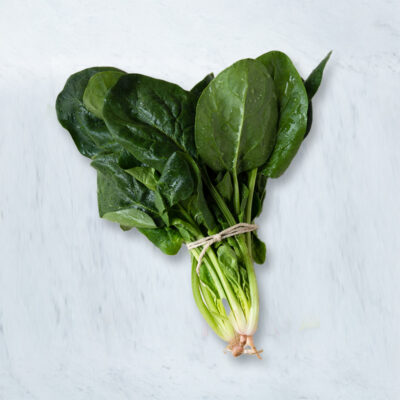
Spinach
Mild & slightly sweet
Spinach is a nutritional powerhouse, packed with vital vitamins (K, A, C), folate, and iron, crucial for bone health, vision, immunity, cell growth, and red blood cell production. Its high antioxidant content and plant compounds may also lower the risk of chronic diseases, making it a valuable addition to a healthy diet.
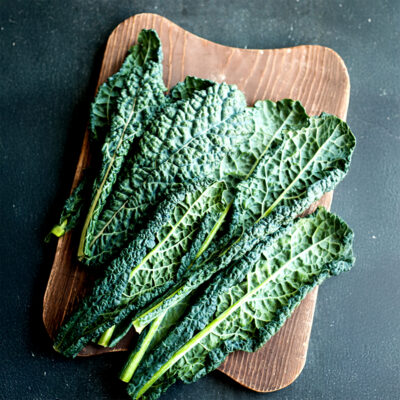
Kale
Hearty & slightly bitter
Kale has different varieties like curly kale, Lacinato (dinosaur) kale, and baby kale offer varying textures. With 684% of the recommended daily value of vitamin K, 206% of the RDV of vitamin A and 134% of the RDV of vitamin C, this dark leafy green packs a health punch.
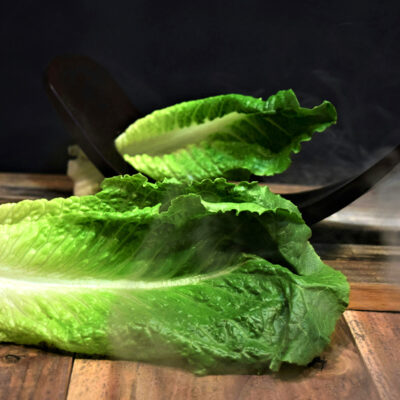
Lettuce (Romaine, Butter, Iceberg)
Mild & slightly sweet
Primarily used raw for salads and wraps, some firmer varieties like romaine can be lightly grilled or braised. Romaine lettuce is high in fiber and low in calories. The vitamin C and beta-carotene content help to lower cholesterol and prevent build-up on artery walls, which reduces the risk of a heart attack.

Arugula (Rocket)
Peppery & slightly bitter
Arugula adds a zesty kick to salads and cooked dishes. More than just a garnish, one cup of this leafy green contains 27.7% of the RDV of vitamin K. Tastes best on top of pizza, in a salad or sandwich. I don’t recommend making smoothies with it.
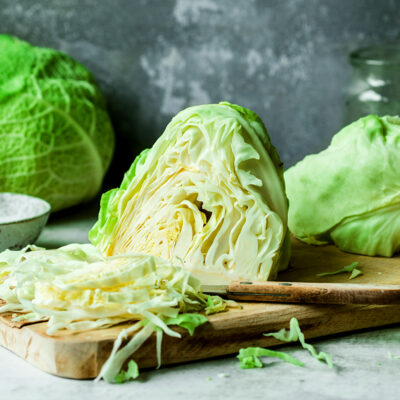
Cabbage
Hearty & pungent
This leafy green can actually be purple, red, white or green, but is definitely still considered a leafy green. I love using cabbage as a plant-based taco shell, blended in a cabbage smoothie or roasted cabbage with light seasoning. Loaded with fiber, folate, vitamin B6 and antioxidants which help fight inflammation.
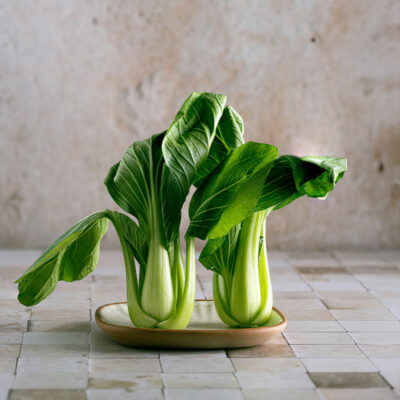
Bok Choy
Mild & slightly sweet
Bok choy is excellent stir-fried, steamed, or added to soups. Full of vitamins A and C, bok choy ranks high for nutrient density as well. All parts of the plant can be used: shredded in a salad, my vegetarian ramen, cooked in soup or blended in a smoothie.
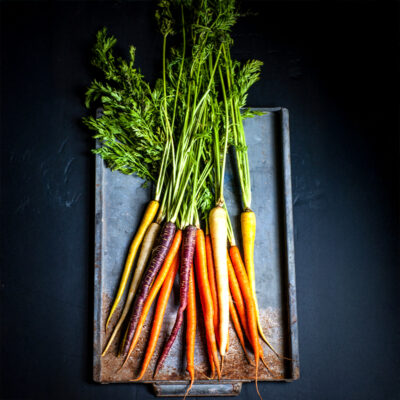
Carrot Greens
Herbaceous & slightly bitter
Carrot tops offer surprising nutrition, providing vitamin K for blood clotting and bones, vitamin C for immunity, and potassium for blood pressure regulation. Their phytonutrients also offer potential anti-inflammatory and antioxidant benefits, making them a worthwhile to smoothies or even pesto!
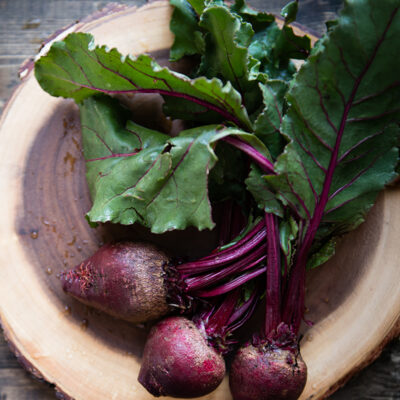
Beet Greens
Slightly earthy
Beet tops are a nutritious leafy green, rich in vitamins K and A, vital for blood clotting, bone health, vision, and immunity. High in phytonutrients, including betalains, beet greens have anti-inflammatory benefits. When blending smoothies with beets, wash and blend in the beet greens.
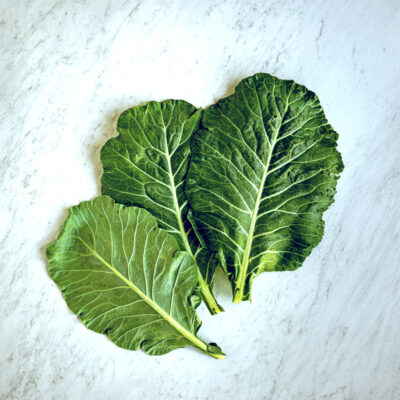
Collard Greens
Tough & slightly bitter
Collard greens benefit from long cooking times. Like their other cruciferous family members, collard greens are great cancer fighters. They are also pretty good at helping your body digest foods properly with all the fiber inside. They are most popular steamed, but adding them raw to your smoothies will provide greater health benefits.
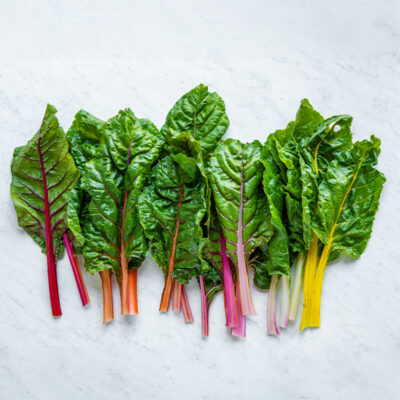
Swiss Chard
Mild & slightly earthy
Mild and slightly earthy with colorful stems that are also edible, Swiss chard is a beautiful and nutritious addition to many dishes. Chard is a colorful, dark leaf known for its ability to regulate the body’s blood sugar. Translation? If diabetes or maintaining blood sugar levels is a concern, add this veggie to your regular rotation.
Leafy Greens Recipes
5 Ways to Use Leafy Greens
Ready to move beyond the traditional salad? Here are some inspiring ways to incorporate more leafy greens into your daily meals:
- Sautéed and stir-fried: Spinach, baby kale, and Swiss chard wilt beautifully in a hot pan with a little olive oil, garlic, and a pinch of salt and pepper. A squeeze of lemon adds brightness. Heartier greens like kale, mustard greens, and bok choy hold up well in stir-fries. Add them towards the end of cooking to maintain some texture and vibrant color. Pair them with your favorite proteins, vegetables, and sauces.
- Soups for warmth and nutrition: Stir in chopped spinach, kale, or Swiss chard during the last few minutes of cooking vegetable soup recipes. They will wilt down and add a boost of nutrients and a touch of freshness. Blend cooked greens like spinach or kale with broth, sautéed onions, and a touch of cream or coconut milk for a smooth and nutritious soup.
- Baked delights with a green twist: Incorporate chopped leafy greens into egg-based dishes like quiches and frittatas. They add color, flavor, and valuable nutrients. Layer sautéed greens into pasta bakes and lasagnas for an extra dose of vegetables. They blend seamlessly with the other ingredients. Add finely chopped cooked greens to roasted root vegetables, or use them as a filling for savory pastries and dumplings.
- Blended goodness in smoothies: Don’t be afraid to toss a handful of spinach or kale into your breakfast smoothie. The flavor is surprisingly mild when combined with fruits, yogurt, and other ingredients.
- Creative raw preparations: While not technically a recipe, juicing leafy greens is a great way to consume a concentrated amount of nutrients. Blend arugula, spinach, or kale with nuts, garlic, olive oil, and lemon juice for a vibrant and flavorful pesto. You can also layer large lettuce leaves like romaine or butter lettuce to create healthy and delicious lettuce wraps and sandwiches.
Benefits of Rotating Leafy Greens
I often talk about rotating your greens when making green smoothies. This is because leafy greens come from all different plant families, each offering different health benefits. Yet if spinach is your jam, no worries! Keep doing that. You can always have a salad with kale or make a soup with Swiss chard.
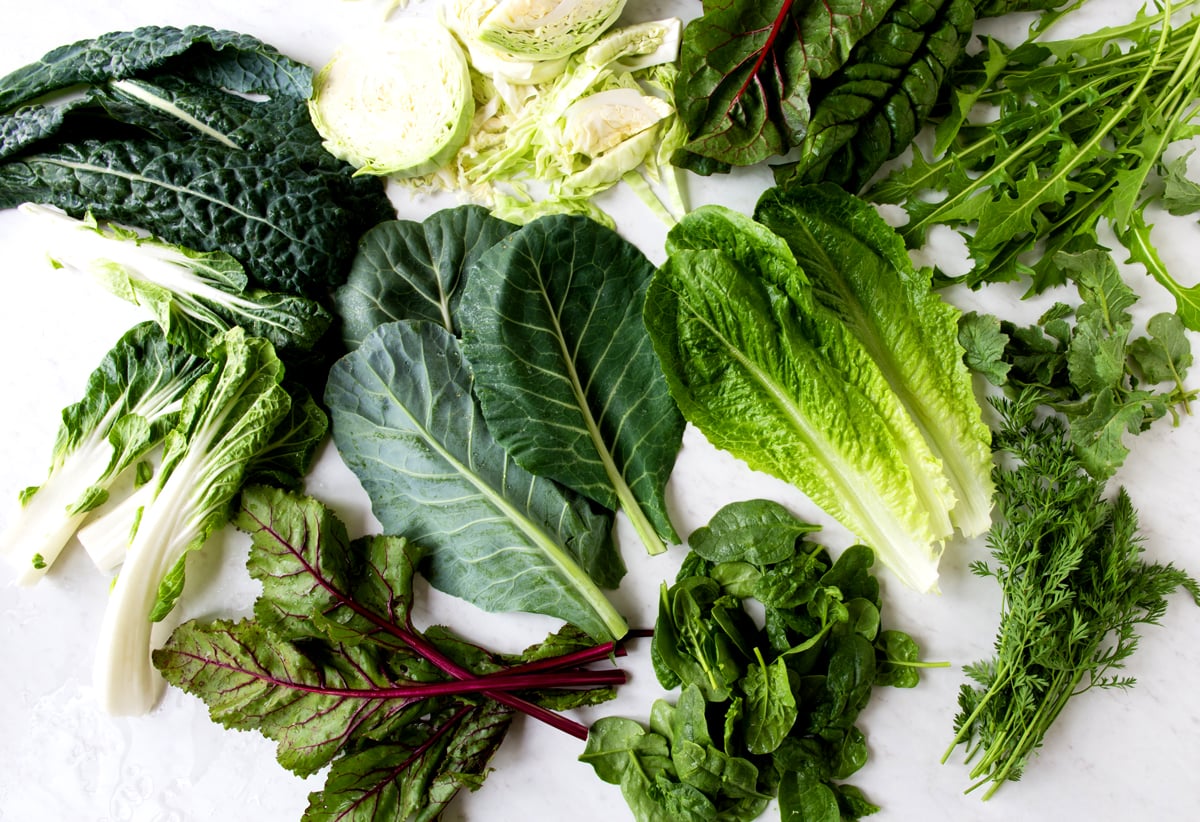
Tips for Cooking with Leafy Green Vegetables
Leafy greens are more than just a salad component. Their versatility and nutritional benefits make them a valuable addition to any healthy diet. By exploring different cooking methods and incorporating them into a variety of dishes, you can unlock a world of flavor and boost your well-being. So, step away from the salad bowl and embrace the green revolution in your kitchen!
- Experiment! Don’t be afraid to try different combinations and cooking methods to discover your favorite ways to enjoy leafy greens.
- Wash thoroughly: Always wash leafy greens thoroughly under cold running water to remove any dirt or grit. A salad spinner can be helpful for drying them.
- Remove tough stems: For heartier greens like kale and collards, remove the tough central stems before cooking.
- Don’t overcook: Most leafy greens cook quickly. Overcooking can make them mushy and reduce their nutritional value.
- Balance flavors: The bitterness of some greens can be balanced with acidic ingredients like lemon juice or vinegar, or by pairing them with sweeter or richer flavors.
What are your favorite leafy greens? Drop a comment below and let me know if this list has inspired you to try a new ingredient, or if you’ve got a new green for me to try!
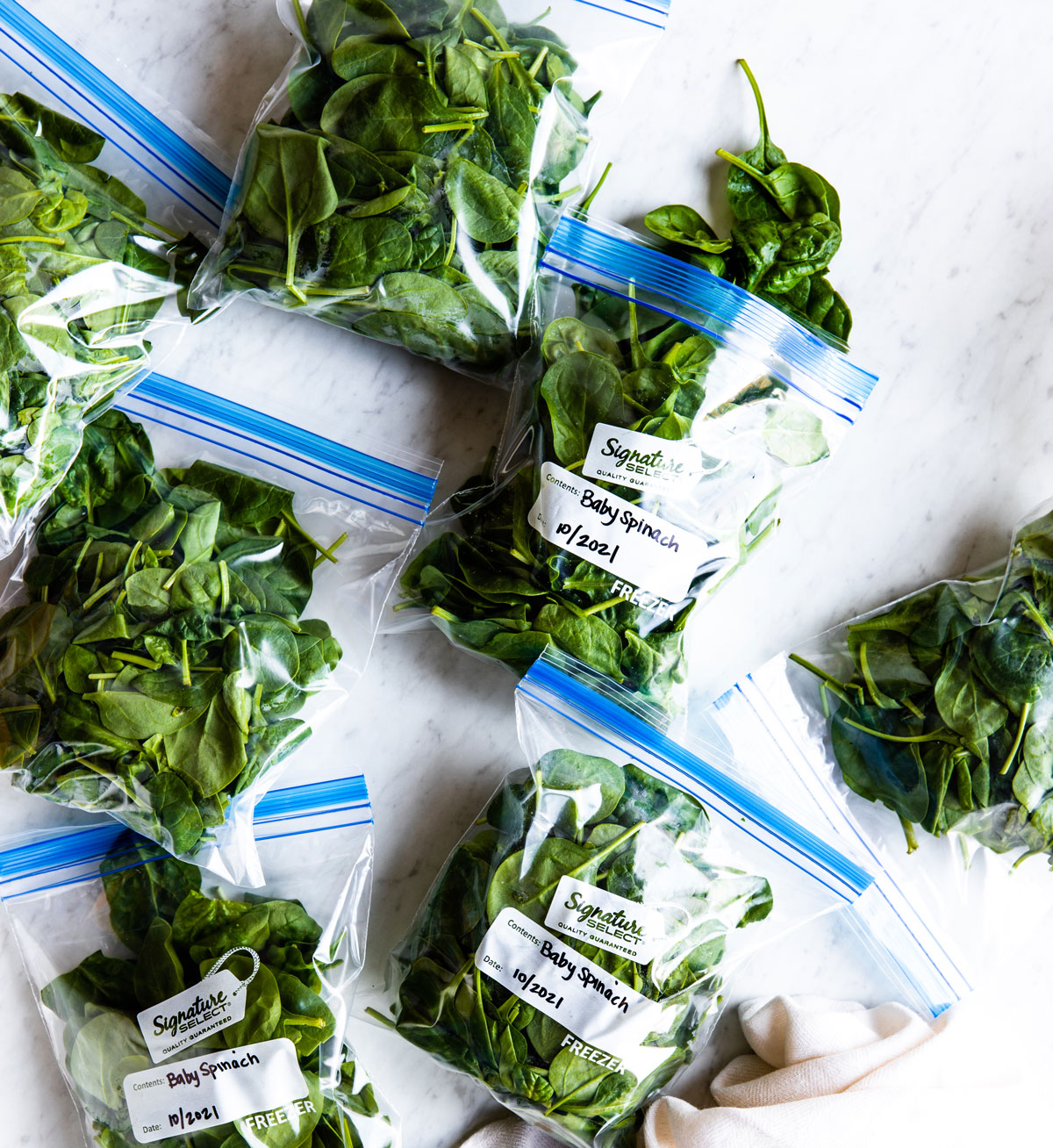
Freezing Your Leafy Greens
Ever wonder how to use up all the beautiful leafy greens you just bought, before they start to wilt? Even though I make green smoothies daily, I sometimes need to freeze my spinach or kale to stay fresh longer.
To lengthen the shelf life of leafy greens and make rotating your greens as easy as opening your freezer, try freezing your spinach. I buy spinach and power greens at Costco— freezing half of it maximizes the freshness.
Common Questions
You’ve probably heard of spinach, kale and lettuce, but leafy greens also include carrot tops, beet greens, swiss chard, arugula and more! They can grow all on their own, or be found on the tops of other plants (like broccoli, beets and carrots).
All leafy greens are incredibly nutritious and great to mix into your diet. Kale and spinach are probably the most nutrient-dense, yet you need a variety of greens (and other fruits and vegetables) for the best health. Don’t be afraid to give a new one a try next time you’re at the store. You might be surprised by mustard greens, bok choy and more!
Greens don’t just take place in salads or garnishes for burgers. You can use them in green smoothies, all kinds of pesto, filling for stuffed mushrooms or potatoes. Pretty much anything you want! Next time you are grocery shopping, grab a new-to-you leafy green and get adventurous with how you prepare it.

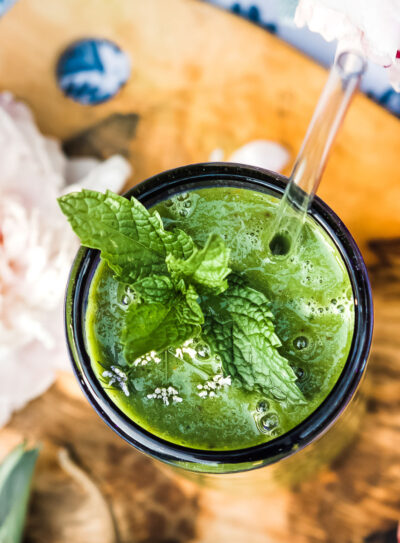


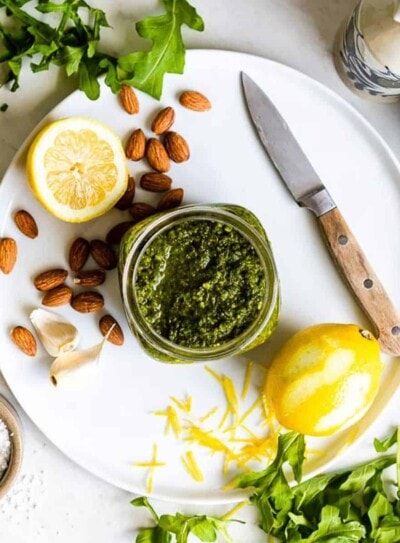
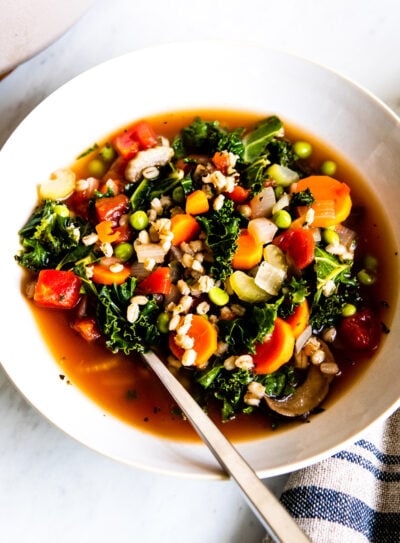

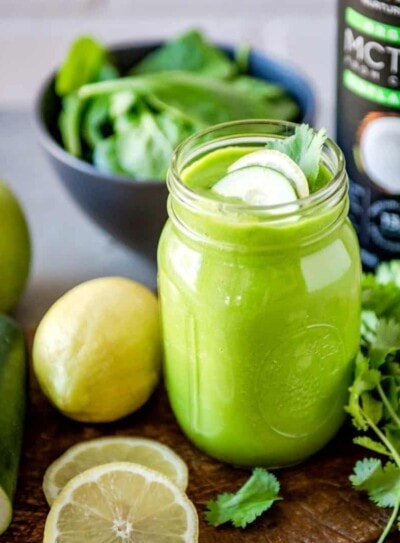
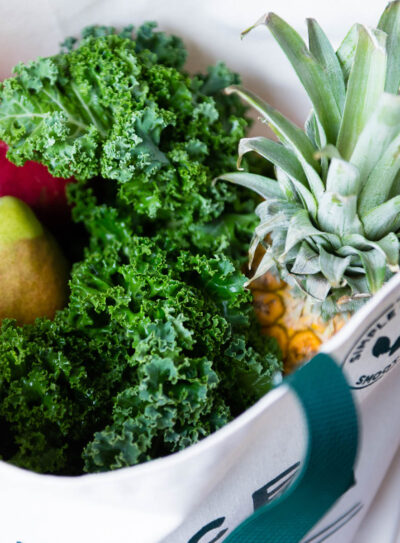


I have a couple of questions about kale – do you usually just use one type of kale – I like the dinosaur/tuscan/lacinato since there seems to be more leafy part per stem. Or do the different varieties have different nutrition? Do you remove the stem from the kale? does it make it taste more bitter? I have been using liquid stevia drops to sweeten it a bit. Thanks for the tip about blending the greens and liquid before adding fruits. thanks!
Hey Mark.
Thanks for the comments/questions. 🙂 You can use any type of kale that you enjoy! 🙂 We love dinosaur kale too. 🙂 You can removed any stems that are too thick to blend.
Here is a link to the nutritional information we currently have on fruit, veggies and leafy greens. 🙂 https://simplegreensmoothies.com/
We usually don’t add extra sweeteners to our green smoothies— fruit is all we use! If you still need a little extra something to enjoy your green smoothie, then try adding just a little real maple syrup or raw honey until you adjust to the green smoothie lifestyle. Please, please, please stay away from zero-calorie or artificial sweeteners—they act like toxins in your body.https://simplegreensmoothies.com/tips/sweeten
Cheers + Happy Blendin’!
I have been drinking green smoothies for over a year and now discovering it may cause oxalyate crystals to form in our body. What do you know about that? Should we back off the greens to prevent the build up of this acid?
Hey Kathy.
Thanks for reaching out. Are you rotating your greens? We suggest every time you go to the store, by a different family of leafy greens. Since we are not doctors or nutritionists, we suggest that any member of community with health concerns to speak to their healthcare provider to confirm that green smoothies would be beneficial for their body.
Must the greens in the smoothie be made of leaves? Or can it also be other frozen vegetables like carrots, peas, zucchini, broccoli, cauliflower etc? Thanks!
Hey Jessica, great question. We love veggies too! We love leafy green and veggies. 🙂 Have you seen this recipe?
2 cups cabbage
5 frozen figs
1 banana
2 cups water
Going back to Jessica’s question:
Are frozen vegetables as good as the the fresh ones? Other words, can I use frozen vegetables as an alternative?
Hey Miriam.
Yes, you can use frozen. Fresh is best, but frozen is a close second. 🙂
Thanks so much for this brilliant article! Sending on the link to all my friends! Spreading the words of green smoothies! Quick question are you suggesting that I should rotate my intake of greens by taking a different family every week for example CRUCIFERS one week and the second week APIACEAE or should I eat CRUCIFERS and APIACEA every week but just rotate the greens from each family i select for example cabbage week 1 is replaced with bok choy week 2. Final question
any recommendations regarding fruit rotations to blend with greens?Ps sorry about the long question!
Good morning Mike.
Correct. Each time you go to the store, buy a different family of leafy greens. 🙂 At this time we do not have a list for fruit rotations, like we do leafy greens. Feel free to mix and match. 🙂
I wanted to thank you for the free download of the green smoothie crash course. I have posted about you and the crash course on my blogging site as I blog about getting healthier and fitter. I have been doing the green smoothies now for 4 days and I can tell a world of difference. My main goal at this point is to get off the sugars that are refined. This is helping tremendously. I have dropped over 3 lbs since I have started and feel great. In fact, My daughter has been sick for 2.5 days now and being that she is 3 she is in my face a lot and you would think I would be showing signs of being sick myself. I am glad to say I am not, however, my husband is. (He isn’t so sure about the green smoothies yet). I am hooked. Thanks so much for what you do.
Hey Morgan!
Thanks so much for the comment and spreading the green smoothie love! We are cheering you on!! 🙂 Keep up posted on your journey! 🙂
What a wealth of health knowledge! I’m so excited about my green smoothies…had my first one for lunch yesterday and another last night and this morning. I’m in love!
Thank you for what you do
Cheers to your first green smoothie! 🙂 Happy blending, Verjuana!
I love this site. Thank you so much!
We’re glad to have you in our community, James! 🙂
Love this site thank you so much for your hard work!
🙂
maybe you know why I’m feeling super dehydrated?? Thanks
Hi Lucy.
Make sure you drink lots of water to help flush everything out as well. Sometimes when you make sudden changes in your regular diet, or you add more fiber into your diet, your body needs to adjust. Every body reacts to food differently. If you feel bloated, you may have some personal allergies to certain fruit combinations, that is something you would have to consult with a health care provider about. Also, make sure you don’t eat any other foods 30-60 minutes before after you drink your green smoothies to give your body time to digest the fruits.
Hi ck
Thanks for sharing…just love your blog:-)
Also I’m doing almost every day a green juice since a week and feels my body is super dehydrated???
The juice is spinach/cucumber/celeriac in an apple & beet juice..delicious tough!
Xx
Glad you enjoyed it! 🙂 Which recipe will you try next?
I lightly steam my kale and spinach, then spread them on a cookie sheet and freeze. Once their frozen I transfer them to a ziplock container. Freezing them on the cookie sheet first, makes them much easier to break into serving size chunks and the slight cooking actions helps break down the toxins.
Great idea!
Since I was in mexico I love making a green smoothie using Nopales (cactus leaves) is this a ok substitute for spinach and kale? I am rotating these greens. Thanks
Hey Adam.
We have not tried using cactus leaves, but if that is something you already enjoying eating, then go for it! 🙂 We love all sorts of leafy greens! 🙂
I am new on smoothies and need help too make the best smoothie too fight against cancer.
Anyone who can help me??
Hey May.
Thanks for the question. Since we are not doctors or nutritionist we can’t medically suggest a green smoothie that is good for fight against cancer. My suggestion would be to ask your healthcare provider to point you in the right direction of which fruit and veggies have been studied to help fight cancer. Once you have those answers, just us know and we can find a green smoothie that is great for you and delicious. 🙂
Is it OK to use frozen spinach? Fresh spinach is sometimes hard to find in the local grocery and I’m not familiar with other available greens.
Hey Mary.
Thanks for the comment. Yes, you are more that welcome to use frozen spinach if it is easier to find at the local grocery stores. 🙂
Hello everyone! I made smoothies for a week and a half using kale, collard greens and two kiwi. The problem is I also take plavix. About 5 days later I have seen big bruises on my arms. I think I’m consuming too much kale. What are your thoughts.
Hey Max.
Since we are not doctors or nutritionist the best advice we have is to consult your healthcare provider. 🙂 They will know you best and help you best understand why you are seeing bruises.
Is there a difference when using baby varieties of veggies? Baby spinach, kale, etc?
Hey Aisha.
We have found that baby spinach and baby kale is more mild in taste. Great for beginner green smoothie drinkers. 🙂